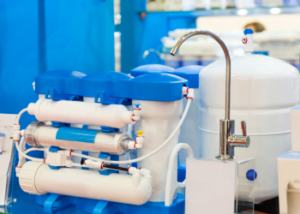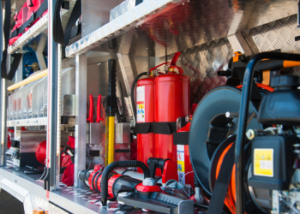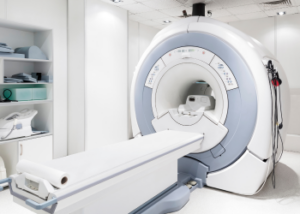Exploring Space Technology Spin-Offs:
Unveiling Lesser-Known Innovations for Everyday Life
Space exploration has consistently pushed the boundaries of technological advancement and spurred innovation.
Beyond its primary mission of expanding our understanding of the universe, space research has yielded numerous spin-off technologies that find surprising applications in everyday life. While many of these spin-offs remain lesser-known, they have made significant contributions to diverse fields such as healthcare, transportation, and environmental conservation.
In this article, we delve into intriguing examples of space technology spin-offs, highlighting their adaptations for water purification systems, advanced materials in sports equipment, medical devices, and other unexpected applications.
Water Purification Systems
 Space research has yielded groundbreaking advancements in water purification technology. NASA‘s expertise in providing clean drinking water for astronauts in space has led to the development of highly efficient filtration systems. These technologies, such as advanced membrane filters and chemical treatment methods, have been adapted for use in portable water purification devices for outdoor enthusiasts, hikers, and emergency response teams. Companies like LifeStraw have successfully integrated these space-derived technologies into compact and easy-to-use water filters, enabling access to safe drinking water in remote areas or during natural disasters.
Space research has yielded groundbreaking advancements in water purification technology. NASA‘s expertise in providing clean drinking water for astronauts in space has led to the development of highly efficient filtration systems. These technologies, such as advanced membrane filters and chemical treatment methods, have been adapted for use in portable water purification devices for outdoor enthusiasts, hikers, and emergency response teams. Companies like LifeStraw have successfully integrated these space-derived technologies into compact and easy-to-use water filters, enabling access to safe drinking water in remote areas or during natural disasters.
Firefighting Equipment
 Space research has influenced the development of innovative firefighting equipment. NASA’s work on flame-resistant materials for spacecraft led to the creation of advanced heat-resistant textiles and fire-retardant coatings. These materials have found applications in firefighting gear, such as protective suits, gloves, and helmets, significantly improving firefighters’ safety and effectiveness. Additionally, firefighters require lightweight and agile equipment to navigate hazardous environments effectively. The development of lightweight materials for spacecraft and spacesuits has influenced the creation of lightweight firefighting suits and equipment. These advancements allow firefighters to move more freely and efficiently, improving their ability to respond to emergencies while ensuring their safety.
Space research has influenced the development of innovative firefighting equipment. NASA’s work on flame-resistant materials for spacecraft led to the creation of advanced heat-resistant textiles and fire-retardant coatings. These materials have found applications in firefighting gear, such as protective suits, gloves, and helmets, significantly improving firefighters’ safety and effectiveness. Additionally, firefighters require lightweight and agile equipment to navigate hazardous environments effectively. The development of lightweight materials for spacecraft and spacesuits has influenced the creation of lightweight firefighting suits and equipment. These advancements allow firefighters to move more freely and efficiently, improving their ability to respond to emergencies while ensuring their safety.
Insulation and Thermal Protection
 The quest for thermal insulation in space exploration has resulted in the creation of highly efficient insulation materials. Technologies such as aerogels, originally developed to protect spacecraft from extreme temperatures, have found applications on Earth. Aerogels are now used as lightweight and super-insulating materials in buildings, homes, and even clothing, enabling energy efficiency and reducing heat loss. These space-derived materials have the potential to revolutionize insulation technology and significantly reduce energy consumption in various industries.
The quest for thermal insulation in space exploration has resulted in the creation of highly efficient insulation materials. Technologies such as aerogels, originally developed to protect spacecraft from extreme temperatures, have found applications on Earth. Aerogels are now used as lightweight and super-insulating materials in buildings, homes, and even clothing, enabling energy efficiency and reducing heat loss. These space-derived materials have the potential to revolutionize insulation technology and significantly reduce energy consumption in various industries.
Cordless Tools and Robotics
 Space missions demand lightweight and portable tools and robotic systems for maintenance and exploration tasks. Consequently, advancements in cordless tool technology have emerged as a spin-off from space research. The development of lightweight, high-performance batteries for space applications has paved the way for the creation of cordless power tools, robotic vacuum cleaners, and electric vehicles. These space-inspired innovations provide convenience, mobility, and reduced environmental impact in everyday activities, ranging from household chores to transportation.
Space missions demand lightweight and portable tools and robotic systems for maintenance and exploration tasks. Consequently, advancements in cordless tool technology have emerged as a spin-off from space research. The development of lightweight, high-performance batteries for space applications has paved the way for the creation of cordless power tools, robotic vacuum cleaners, and electric vehicles. These space-inspired innovations provide convenience, mobility, and reduced environmental impact in everyday activities, ranging from household chores to transportation.
Scratch-Resistant Lenses and Coatings
 Space missions require durable materials that can withstand the harsh conditions of space travel. Research conducted by NASA to develop protective coatings for spacecraft windows and camera lenses has led to the creation of scratch-resistant coatings for eyeglasses and camera lenses in everyday use. These coatings significantly enhance the longevity and clarity of optical surfaces, improving the durability and visual quality of eyewear and photography equipment.
Space missions require durable materials that can withstand the harsh conditions of space travel. Research conducted by NASA to develop protective coatings for spacecraft windows and camera lenses has led to the creation of scratch-resistant coatings for eyeglasses and camera lenses in everyday use. These coatings significantly enhance the longevity and clarity of optical surfaces, improving the durability and visual quality of eyewear and photography equipment.
Structural Monitoring Systems
 Spacecraft need robust structural monitoring systems to ensure the integrity of their components during launch, re-entry, and missions in space. The development of lightweight and high-precision sensors for structural health monitoring in space vehicles has been adapted for use in civil engineering. These sensors can detect structural weaknesses, monitor vibrations, and provide valuable data for the maintenance and safety of bridges, buildings, and other critical infrastructure.
Spacecraft need robust structural monitoring systems to ensure the integrity of their components during launch, re-entry, and missions in space. The development of lightweight and high-precision sensors for structural health monitoring in space vehicles has been adapted for use in civil engineering. These sensors can detect structural weaknesses, monitor vibrations, and provide valuable data for the maintenance and safety of bridges, buildings, and other critical infrastructure.
Food Safety and Preservation
 Space agencies meticulously design and develop food systems for astronauts to ensure nutrition, safety, and long shelf life. These efforts have led to advancements in food safety and preservation technologies that benefit everyday consumers. Techniques such as irradiation and modified atmosphere packaging, originally developed for space missions, are now utilized to extend the shelf life of food products, reduce spoilage, and maintain nutritional quality.
Space agencies meticulously design and develop food systems for astronauts to ensure nutrition, safety, and long shelf life. These efforts have led to advancements in food safety and preservation technologies that benefit everyday consumers. Techniques such as irradiation and modified atmosphere packaging, originally developed for space missions, are now utilized to extend the shelf life of food products, reduce spoilage, and maintain nutritional quality.
Energy-Efficient LED Lighting
 Space missions rely on energy-efficient lighting systems to maximize power resources and reduce heat generation. The development of light-emitting diodes (LEDs) for space applications has revolutionized lighting technology on Earth. LEDs offer high energy efficiency, long lifespan, and reduced environmental impact compared to traditional lighting sources. They are now widely used in residential, commercial, and street lighting, contributing to significant energy savings and lower greenhouse gas emissions.
Space missions rely on energy-efficient lighting systems to maximize power resources and reduce heat generation. The development of light-emitting diodes (LEDs) for space applications has revolutionized lighting technology on Earth. LEDs offer high energy efficiency, long lifespan, and reduced environmental impact compared to traditional lighting sources. They are now widely used in residential, commercial, and street lighting, contributing to significant energy savings and lower greenhouse gas emissions.
Medical Devices
 Space research has played a crucial role in developing innovative medical devices and procedures. Magnetic Resonance Imaging (MRI), a cornerstone of modern medical diagnostics, owes its existence to the space program. NASA’s pursuit of accurate sensors for mapping the surface of distant planets led to the invention of miniaturized sensors and detectors that later became the basis for MRI technology. Furthermore, NASA’s research on developing life support systems for astronauts has paved the way for advancements in artificial heart pumps, ventricular assist devices, and other life-saving medical equipment.
Space research has played a crucial role in developing innovative medical devices and procedures. Magnetic Resonance Imaging (MRI), a cornerstone of modern medical diagnostics, owes its existence to the space program. NASA’s pursuit of accurate sensors for mapping the surface of distant planets led to the invention of miniaturized sensors and detectors that later became the basis for MRI technology. Furthermore, NASA’s research on developing life support systems for astronauts has paved the way for advancements in artificial heart pumps, ventricular assist devices, and other life-saving medical equipment.
Advanced Materials in Sports Equipment
 Space technology has also revolutionized the field of sports by introducing advanced materials that enhance performance and safety. Carbon fiber, initially developed for lightweight spacecraft construction, is now widely used in sports equipment such as bicycles, tennis rackets, and golf clubs. The exceptional strength-to-weight ratio of carbon fiber significantly improves performance and durability. Additionally, NASA’s aerodynamic research for spacecraft re-entry has been applied to design streamlined equipment, reducing drag and enhancing athletes’ speed and agility.
Space technology has also revolutionized the field of sports by introducing advanced materials that enhance performance and safety. Carbon fiber, initially developed for lightweight spacecraft construction, is now widely used in sports equipment such as bicycles, tennis rackets, and golf clubs. The exceptional strength-to-weight ratio of carbon fiber significantly improves performance and durability. Additionally, NASA’s aerodynamic research for spacecraft re-entry has been applied to design streamlined equipment, reducing drag and enhancing athletes’ speed and agility.
The spin-off technologies originating from space research have had a remarkable impact on various aspects of our daily lives.
While space exploration expands our knowledge of the universe, its indirect benefits extend beyond our expectations. From advancements in water purification systems to flame-resistant materials for firefighting gear, insulation technologies, and the development of cordless tools and robotics, space technology spin-offs continue to shape our world. As we recognize and appreciate these lesser-known innovations, we gain a deeper understanding of the interconnectedness between space exploration and practical applications that enhance our quality of life.
These space technology spin-offs exemplify the power of curiosity, innovation, and collaboration in pushing the boundaries of human capabilities and driving progress in unexpected ways.
Find out more about the impact of space technology here: